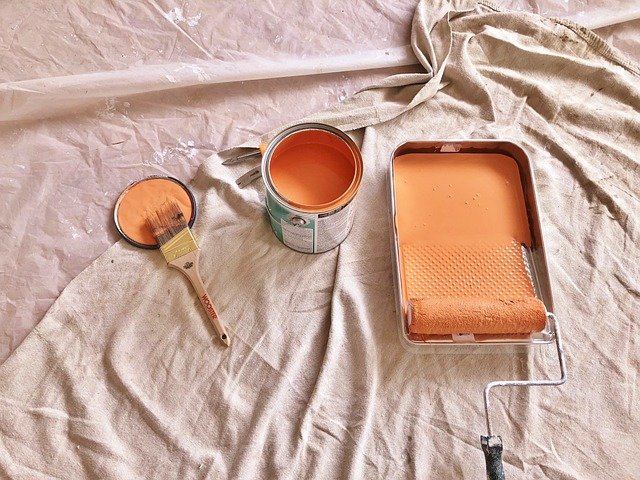Elevating Spaces: The Artistry of Trompe L'oeil in Modern Home Design
Prepare to be deceived—in the most delightful way possible. The ancient art of trompe l'oeil, French for "deceive the eye," is experiencing a renaissance in contemporary home design, offering homeowners a chance to transform their spaces with captivating visual illusions. This centuries-old technique is finding new life in modern interiors, blending traditional craftsmanship with cutting-edge design sensibilities to create spaces that are both whimsical and sophisticated.

The Historical Tapestry of Trompe L’oeil
The roots of trompe l’oeil stretch back to ancient Greece and Rome, where artists used the technique to create the illusion of architectural elements on flat surfaces. During the Renaissance, masters like Andrea Mantegna elevated the art form, creating stunning ceiling frescoes that seemed to open up to the heavens. The Baroque period saw trompe l’oeil reach new heights of complexity, with artists like Pere Borrell del Caso creating paintings so realistic that viewers were often fooled into thinking they were looking at real objects or scenes.
As art movements evolved, trompe l’oeil found its way into various styles and applications. The Victorian era saw a particular fascination with the technique, using it to create the appearance of elaborate moldings, paneling, and even entire rooms filled with books or exotic locales. This rich history has laid the foundation for the current revival, infusing modern spaces with a sense of depth, storytelling, and visual intrigue.
Contemporary Interpretations: Where Tradition Meets Innovation
Today’s trompe l’oeil artists are pushing the boundaries of the technique, combining traditional methods with modern materials and digital technologies. One emerging trend is the use of large-scale murals that transform entire walls into windows to other worlds. Imagine stepping into your living room to find a vista of a sun-drenched Tuscan hillside or the bustling streets of Paris. These immersive designs not only add visual interest but also have the power to alter the perceived dimensions of a space, making small rooms feel expansive and airy.
Another innovative application is the use of trompe l’oeil in functional elements of the home. Designers are creating faux architectural features like arched doorways, intricate moldings, and even fireplaces that are indistinguishable from the real thing at first glance. This allows homeowners to add character and period details to modern spaces without the need for costly renovations.
The Psychology of Perception: How Trompe L’oeil Shapes Our Spaces
The effectiveness of trompe l’oeil lies in its ability to play with our perception, creating a sense of wonder and discovery within our living spaces. This psychological impact goes beyond mere aesthetics; it can fundamentally alter how we experience and interact with our environments. Studies in environmental psychology have shown that visual complexity and the presence of natural elements in our surroundings can reduce stress and improve overall well-being.
Trompe l’oeil offers a unique way to introduce these elements into our homes, allowing us to create spaces that feel larger, more dynamic, and more connected to the outside world. Whether it’s a faux skylight that brings the illusion of natural light into a windowless room or a mural that transports us to a tranquil forest glade, these artistic interventions have the power to transform our daily lives in subtle yet profound ways.
Practical Applications: From Subtle Accents to Bold Statements
The versatility of trompe l’oeil makes it suitable for a wide range of applications in home design. For those looking to dip their toes into the world of visual illusions, small accents can make a big impact. A painted niche that appears to house a classical sculpture or a bookshelf that seems to recede into the wall can add depth and interest to otherwise plain surfaces.
For bolder statements, entire rooms can be transformed through the use of trompe l’oeil. Bathrooms become underwater grottoes, bedrooms open up to starry night skies, and dining rooms are enveloped in lush, painted gardens. The key to successful implementation lies in balancing the illusion with the practical needs of the space, ensuring that the design enhances rather than overwhelms the room’s function.
The Craftsmanship Behind the Illusion
While digital printing and projection mapping technologies have opened up new possibilities for trompe l’oeil, there’s still a significant demand for hand-painted designs. Master painters specializing in this technique combine a deep understanding of perspective, light, and shadow with meticulous attention to detail to create truly convincing illusions. The process often involves multiple layers of paint, careful blending, and the strategic use of highlights and shadows to create a sense of depth and dimensionality.
For homeowners interested in incorporating trompe l’oeil into their spaces, working with a skilled artist or designer is crucial. These professionals can help translate ideas into reality, ensuring that the final product not only looks stunning but also integrates seamlessly with the existing architecture and decor of the home.
Sustainability and Longevity in Trompe L’oeil Design
One of the most appealing aspects of trompe l’oeil in modern home design is its potential for sustainability. Unlike physical renovations or additions, which often require significant resources and materials, trompe l’oeil can dramatically transform a space with minimal environmental impact. Paint and other materials used in creating these illusions are generally long-lasting and can be easily refreshed or changed over time, making it a flexible and eco-friendly option for home improvement.
Moreover, the longevity of well-executed trompe l’oeil designs means that they can become cherished features of a home for years to come. Unlike trendy wallpapers or temporary decor solutions, a high-quality trompe l’oeil mural or accent can appreciate in value over time, becoming a unique selling point should the homeowner decide to move.
As we look to the future of home design, trompe l’oeil stands out as a technique that bridges the gap between art and architecture, tradition and innovation. Its ability to transform spaces, evoke emotions, and challenge our perceptions makes it a powerful tool for creating truly personalized living environments. Whether used to add a touch of whimsy to a child’s room or to create a sophisticated focal point in a formal living area, trompe l’oeil offers endless possibilities for those willing to embrace the art of illusion in their homes.





